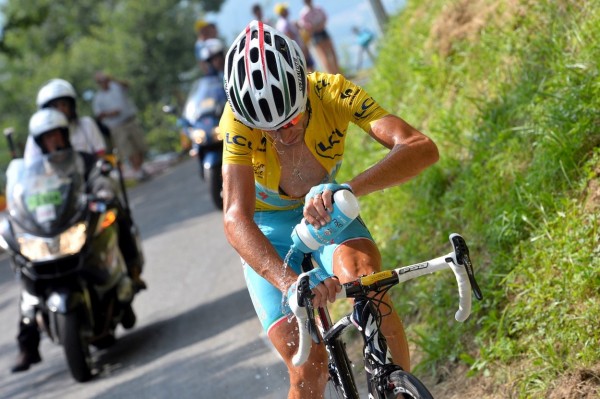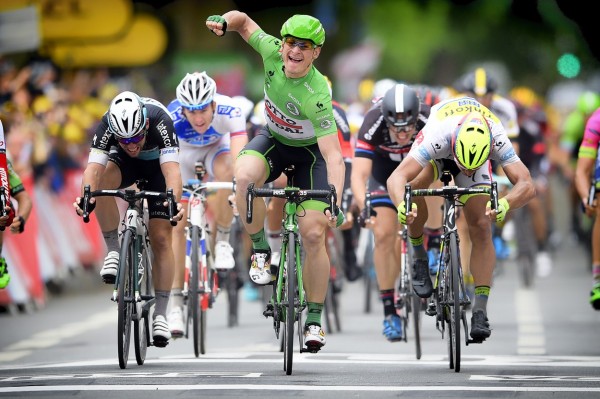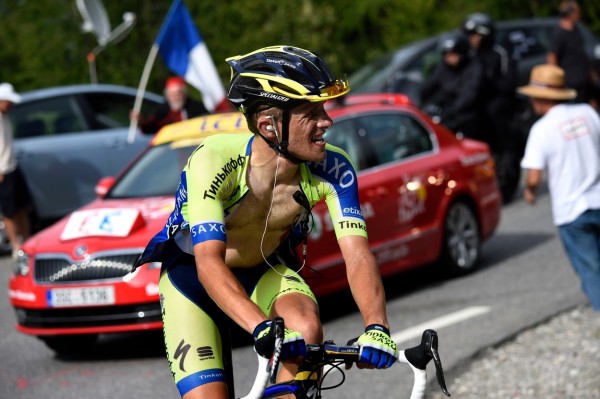Stay On Your Bike
Already this year, Tony Martin is out with a broken collarbone, and Cancellara ended his chances with no less than two fractured vertebrae. Abandoning a race is always tragic, but more so when you’ve worn the Maillot Jaune.

After week one of his winning Tour De France in 2012, Wiggins said, “Unless you’re in the very front line of the peloton, it’s a lottery whether you crash or not.” You need your team to muscle everyone around you and get you to a safe place. The big teams will look to control the pace and dominate the front line with strength in numbers.
Respect The Domestiques
The domestique riders work twice as hard as the contenders for most of the race, both physically and mentally. They’re effectively disposable since they’ve not been chosen as contenders for any jersey, but that doesn’t stop them being hard men.

Domestiques carry the water from the team cars up to the other riders, look out for potholes, protect the team leaders from the wind, and form a buffer zone between their team leaders and the other teams. Watching a road for 150km tires you mentally, never mind the physical challenges endured.
Stay Close To Conserve Energy
Once teammates are close enough to each other, their main aim is to protect their contender from the wind. You can cycle to your local shop without breaking a sweat at about 20kph (12mph), but Tour De France cyclists average 40kph (25mph) across thousands of km.
And every time you double your speed on a bike, you need eight times the physical effort to push air out of the way. The domestiques create a wall to shelter their contender until he’s ready to drop the hammer.

Cyclists need to be within millimetres of the wheel in front to benefit from slipstreaming. This is an inherently dangerous technique that requires exceptional skill, which is why you’re bound to see crashes in tour cycling. The plus side is that it can reduce your effort by up to 80%.
Taking On A Headwind
When there’s a headwind the teams all clump together in what’s known as a peloton. The domestiques take turns in the front and circulate around their team leader to protect him from the wind.
Expect Fireworks When The Peloton Blows Apart
If the wind blows from the side, you’ll see the peloton split into diagonal lines across the road in an echelon formation. This is when teams are vulnerable to attack, especially if they become split across two echelons, or their team leader is in the wrong echelon.

Contador’s Saxo-Tinkoff exploited this tactic to devastating effect in the 2013 Vuelta when they attacked against Froome’s Team Sky. Known for their calculated approach, Team Sky were uncharacteristically taken completely by surprise.
Climb Every Mountain
The King of the Mountain competition is the only jersey that can reliably be won by individual effort. For one, riders aren’t going fast enough up the winding Alpine roads for wind resistance to be an issue, so any team mates hanging on to big climbers like Quintana are only there to offer moral support and carry water until they can hang on no longer.

If your team is in it for the sprint competition, the team’s climbers are there to encourage the likes of Cipollini to make it home before the sun sets.
Unleash The Sprinters
The aim of a team looking to get their contender in the Green Jersey is to keep your main man on a leash. Keeping someone like Sagan in line until the last 1km of a race is a tough job.

Teams have a lead out rider who will exhaust all his energy until the last few hundred metres, getting the sprinter into place. However, Cavendish in his prime would often abandon his own team in favour of slip streaming the fastest rider, until digging deep for his own sprint for the finish line.
Making A Break For It
No one ever believes a breakaway will succeed. At some point a lone rider or a group together will break from the rest of the peloton and get several minutes ahead of the competition. But breakaways have less protection from the wind, and use up more of their effort early on, so most of the time the peloton easily catches up with them.

When a break away succeeds, though, it’s something special. Merckx famously won a Tour stage in Marseille so far ahead of the peloton that organisers weren’t expecting them and no one saw it except a couple of startled officials.
You may wreck yourself with the effort, but breakaways are how legends are born.




